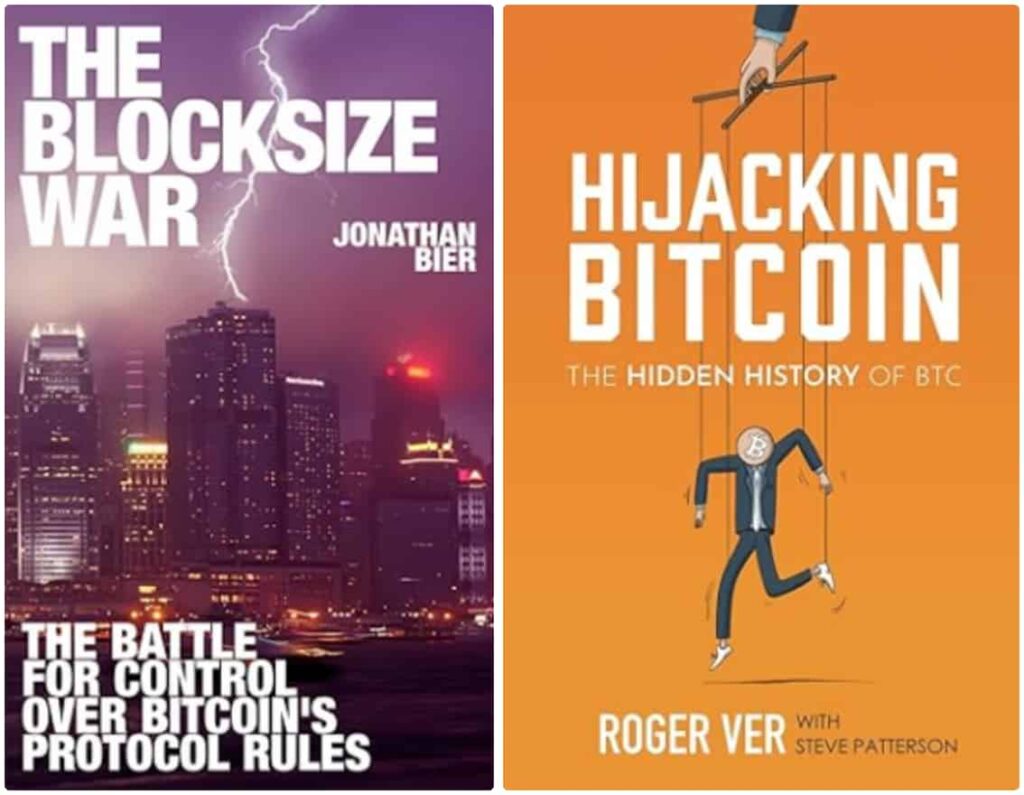The blocksize war, a contentious debate within the Bitcoin (BTC) community, led to a chain split in 2017 and remains relevant seven years later. In particular, the dispute centered around whether to increase the block size limit from 1 MB to accommodate more transactions. This split resulted in the creation of Bitcoin Cash (BCH), a separate cryptocurrency with a larger block size.
In a recent blog post, Vitalik Buterin, the creator of Ethereum (ETH), shared his reflections on the blocksize war. Buterin, who recently finished reading two books presenting opposing perspectives on the conflict, offered his unique insights into the debate.
Notably, the two books, “The Blocksize War” by Jonathan Bier and “Hijacking Bitcoin” by Roger Ver and Steve Patterson, provide contrasting narratives. Bier’s book presents the pro-small-block perspective, while Ver and Patterson’s work advocates for the pro-big-block side.

“The Blocksize War” book (left), “Hijacking Bitcoin” book (right). Source: Vitalik Buterin
Bitcoin blocksize war in retrospective
Vitalik Buterin noted that both sides agreed on the object-level debate: small blockers prioritized ease of running nodes, while large blockers emphasized cheaper transaction fees. However, their depictions of the underlying issues differed significantly.
According to Bier, the small-block side stood for users against powerful cabals trying to control the chain. In contrast, Ver portrayed the big-block side as defending users against self-appointed high priests and profit-seeking companies.
Buterin, who initially sided with the big blockers, found merit in their arguments about Bitcoin’s original promise of digital cash. He also questioned the small blockers’ “consensus of users” narrative and criticized their censorship of opposing views on social media, in agreement with Ver’s book.
However, Buterin also acknowledged the big blockers’ shortcomings, such as their inability to agree on a block size limit. He found fault in their argument that miners should control Bitcoin and their displays of technical incompetence, in agreement with Bier’s book.
On June 1, Sal the Agorist also mentioned the blocksize debate in a post on X showing Andreas Antonopoulos revisiting the topic while highlighting that the known small-blocker advocate blocked him, a known big-blocker, for saying the same thing years ago.
Andreas Antonopoulos now says we can safely increase the block size after blocking me & many others for saying the same thing years ago…. pic.twitter.com/HunGuMFVsv
— Sal the Agorist (@SallyMayweather) June 1, 2024Vitalik Buterin’s conclusion on the blocksize war
Buterin described the blocksize war as a “one-sided competence trap,” where one side monopolizes competent people but pushes a narrow perspective. Meanwhile, the other side recognizes the problem but fails to develop the technical ability to execute its vision.
The Ethereum creator emphasized the importance of new technology in diffusing political tension, citing examples from Ethereum’s development. He expressed concern about Bitcoin’s ability to become a tech-forward ecosystem and highlighted the lessons Ethereum has learned from Bitcoin’s experiences.
In conclusion, Buterin recommended reading both books to understand this defining moment in Bitcoin’s history. He stressed that the lessons from the blocksize war extend beyond Bitcoin and are relevant for other digital communities seeking to build their own visions for the future.















